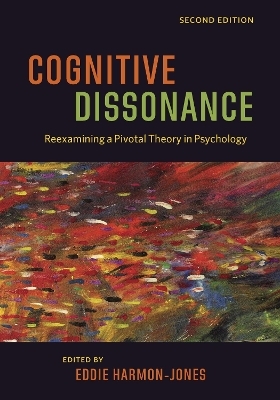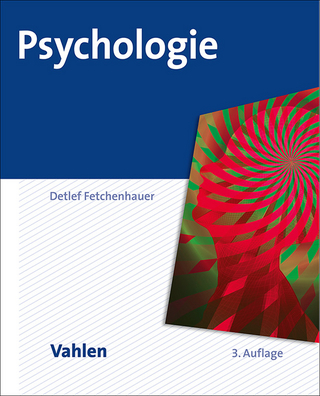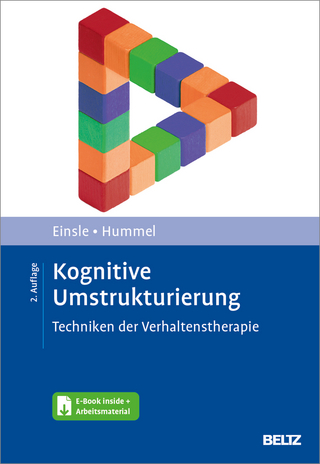
Cognitive Dissonance
American Psychological Association (Verlag)
978-1-4338-3010-5 (ISBN)
- Lieferbar (Termin unbekannt)
- Versandkostenfrei innerhalb Deutschlands
- Auch auf Rechnung
- Verfügbarkeit in der Filiale vor Ort prüfen
- Artikel merken
This volume describes advances in the theory of cognitive dissonance, from its origination in 1954 to the present day.
2019 Outstanding Academic Title
What mental process occurs when a person does something she knows is unhealthy? When an honest person tells a "white lie," what happens to his or her sense of integrity? If we must choose between two equally attractive options, why does our value judgement of the options change after the choice has been made?
In 1954 Dr. Leon Festinger first posited a theory of cognitive dissonance to describe the psychological phenomenon that occurs in these situations. In the years since, cognitive dissonance has become a central pillar of psychological theory, as was documented in the first edition of this book. In this new and fully-updated edition, editor Eddie Harmon-Jones brings the study of cognitive dissonance into the twenty-first century. Contributors survey recent discoveries about the role dissonance plays in a variety of information processes, as well as connections between dissonance processes and other motivational processes. Other authors introduce mathematical and action-based models that summarize how dissonance works. Evidence describing the neural correlates of dissonance are also provided, helping demonstrate the biological foundations of the theory.
Eddie Harmon-Jones, Ph.D, is a Professor of Psychology at the University of New South Wales, Sydney. He received his Ph.D. in Psychology from the University of Arizona in 1995 and has been teaching at UNSW since 2012. Dr. Harmon-Jones is a well-known expert in the field of social neuroscience, cognitive dissonance, and the motivating aspects of emotions. He is widely published and has earned numerous honors for his contributions to the field. Dr. Harmon-Jones lives in Sydney, New South Wales, Australia. Visit http://www.socialemotiveneuroscience.org/, and follow @eddiehj68.
Contributors
Foreword to the First Edition
Foreword to the Second Edition
Preface
Chapter 1: An Introduction to Cognitive Dissonance Theory and an Overview of Current Perspectives on the Theory
Eddie Harmon-Jones and Judson Mills
Part I: Perspectives Employing the Original Version of the Theory
Chapter 2: Improving the 1957 Version of Dissonance Theory
Judson Mills
Chapter 3: A Radical Point of View on Dissonance Theory
Jean-Leon Beauvois and Robert-Vincent Joule
Chapter 4: Understanding the Motivation Underlying Dissonance Effects: The Action-Based Model
Eddie Harmon-Jones and Cindy Harmon-Jones
Chapter 5: What Is Cognitive Consistency, and Why Does It Matter?
Bertram Gawronski and Skylar M. Brannon
Chapter 6: Dissonance Now: How Accessible Discrepancies Moderate Distress and Diverse Defenses
Ian McGregor, Ian R. Newby-Clark, and Mark P. Zanna
Part II: The Role of the Self in Dissonance
Chapter 7: Dissonance, Hypocrisy, and the Self-Concept
Elliot Aronson
Chapter 8: Self-Affirmation Theory: An Update and Appraisal
Joshua Aronson, Geoffrey Cohen, and Paul R. Nail
Chapter 9: In Search of the Motivation for Dissonance Reduction: The Drive to Lessen Aversive Consequences
Joel Cooper
Part III: Mathematical Models, Neural Activations, and Affective Responses
Chapter 10: Modeling Cognitive Dissonance as a Parallel Constraint Satisfaction Network With Learning
Stephen J. Read and Brian M. Monroe
Chapter 11: Neural Basis of Cognitive Dissonance
Keise Izuma and Kou Murayama
Chapter 12: Moving Beyond Attitude Change in the Study of Dissonance-Related Processes: An Update on the Role of Discomfort
Patricia G. Devine, John M. Tauer, Kenneth E. Barron, Andrew J. Elliot, Kristen M. Vance, and Eddie Harmon-Jones
Appendix A: Social Communication and Cognition: A Very Preliminary and Highly Tentative Draft
Leon Festinger (1954)
Appendix B: Reflections on Cognitive Dissonance: 30 Years Later
Leon Festinger (1987)
Appendix C: Historical Note on Festinger’s Tests of Dissonance Theory
Judson Mills
Index
About the Editor
| Erscheinungsdatum | 01.04.2019 |
|---|---|
| Zusatzinfo | 22 Figures, 5 Tables, and 3 Appendixes |
| Verlagsort | Washington DC |
| Sprache | englisch |
| Maße | 178 x 254 mm |
| Themenwelt | Geisteswissenschaften ► Psychologie ► Allgemeine Psychologie |
| Geisteswissenschaften ► Psychologie ► Verhaltenstherapie | |
| ISBN-10 | 1-4338-3010-8 / 1433830108 |
| ISBN-13 | 978-1-4338-3010-5 / 9781433830105 |
| Zustand | Neuware |
| Informationen gemäß Produktsicherheitsverordnung (GPSR) | |
| Haben Sie eine Frage zum Produkt? |
aus dem Bereich


